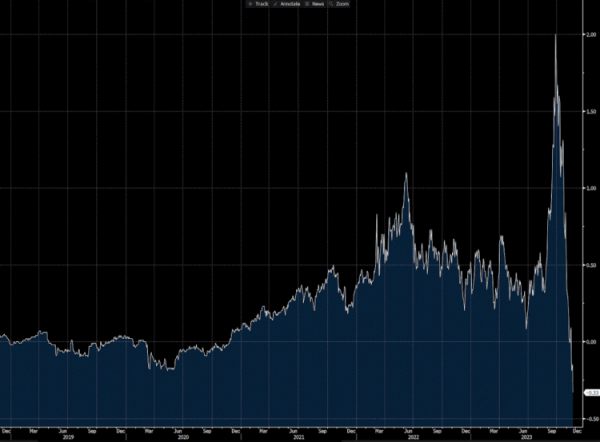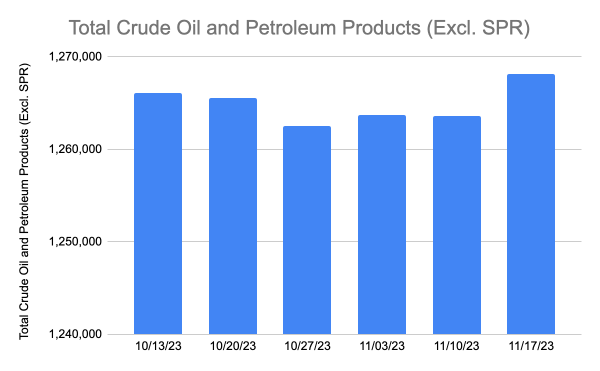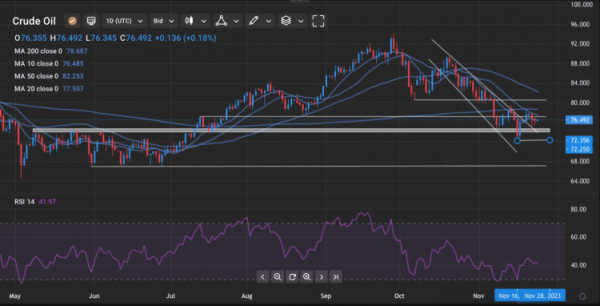Crude prices slide on OPEC+ uncertainty
Crude prices have chopped sideways amid signs of turmoil within OPEC+. We look at the fundamentals of the oil market and the technical levels of WTI.
Crude prices fall as OPEC+ delays monthly JMMC meeting
As the economic data softens in the US, oil prices have shifted to reflect a weaker demand environment in the short term. In recent weeks, OPEC+ has flagged its willingness to extend or deeper output cuts to stabilise the market. This week, the prospect of further production curbs was thrown into doubt amid reports that some cartel members oppose further reduction of output, with a handful of African members and QATAR arguing price increases would not offset the cost of lower volumes. The disunity forced OPEC+ to delay its November 26th Joint Ministerial Monitoring Meeting by four days, raising the risk that no deal will be reached to curb supply.
Oil futures shift into contango on looming oversupply
With the demand outlook deteriorating and future supply uncertain, the futures market has remained in contango, reflecting a short-term oversupply of oil in global markets. While the dynamic is only expected to persist in the short term or could reflect speculative activity rather than underlying fundamentals, the structure of the futures market may reflect an imbalance in spot markets that requires intervention to return to equilibrium.

(Source: Bloomberg)
US Crude Inventories rise more than forecast
Rising US crude inventories continue to put downward pressure on global oil prices. US stockpiles increased by 8.7 million barrels last week, exceeding the forecast of 900 thousand barrels. The dynamic points to increased capacity and moderately weaker demand, with the change in inventories in the coming weeks likely determined by the extent of demand going into the winter.

(Source: Energy Information Association)
WTI chops sideways with wide intraday ranges
Speculation regarding future OPEC+ policy has led to heightened uncertainty, volatility, and intraday ranges for WTI Crude. Buyers have emerged on dips below $73.80; sellers have defended the 20 and 200-day moving averages. Major technical support appears at around $80.50 per barrel. A push below support around $72.00 per barrel could invite more significant selling.

(Past performance is not a reliable indicator of future results)